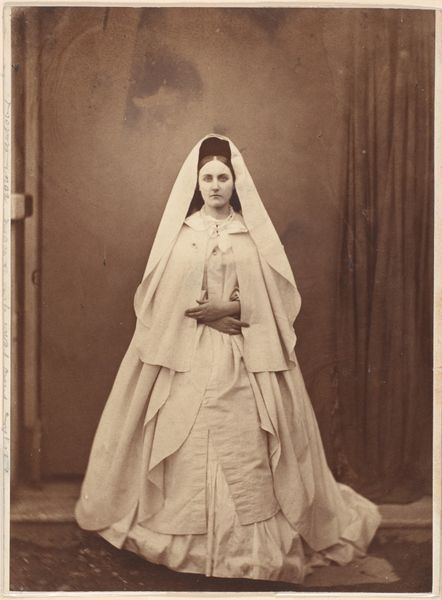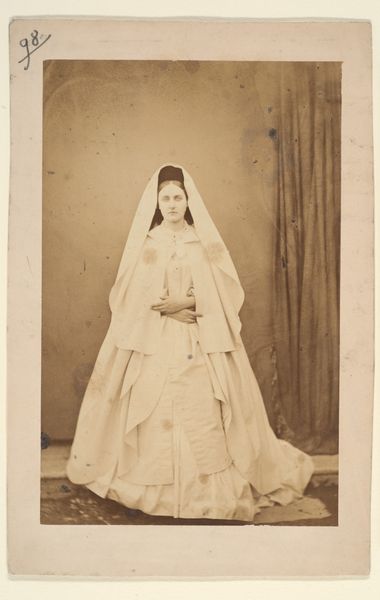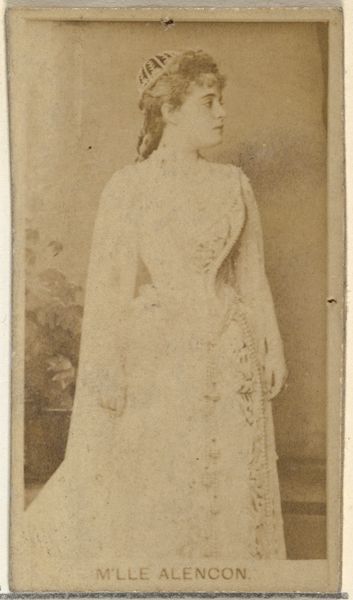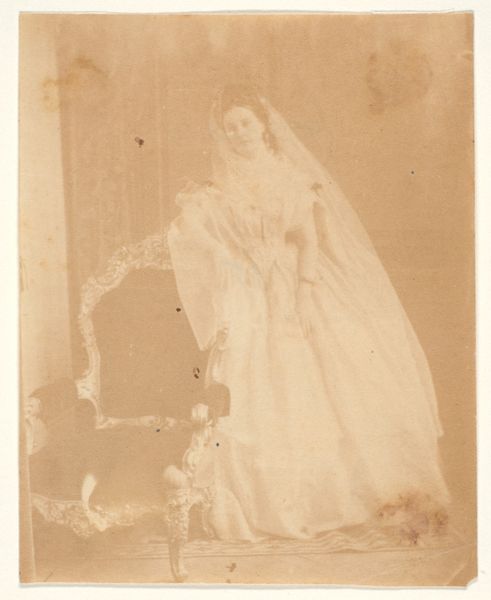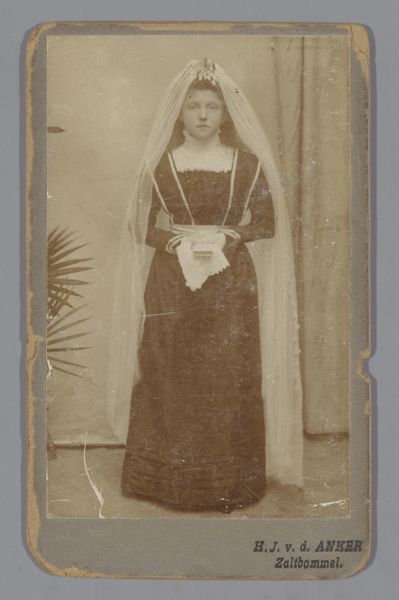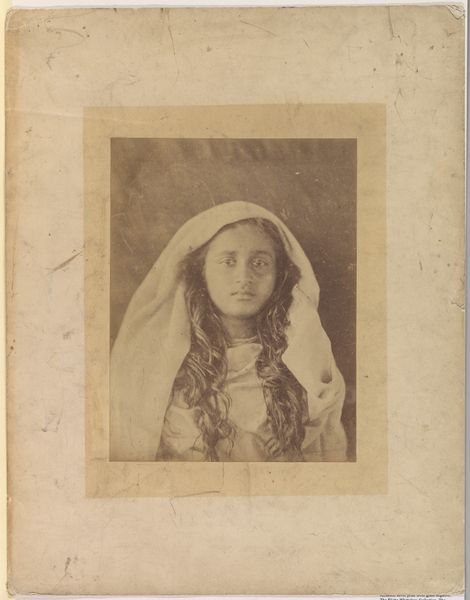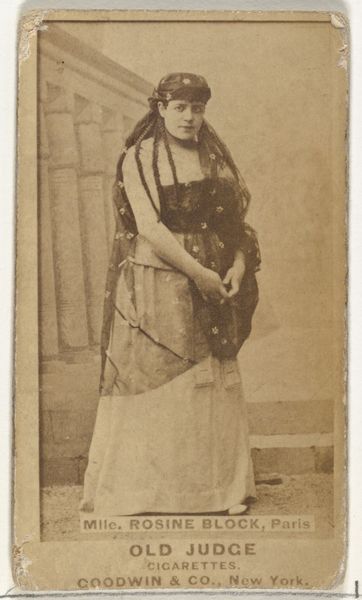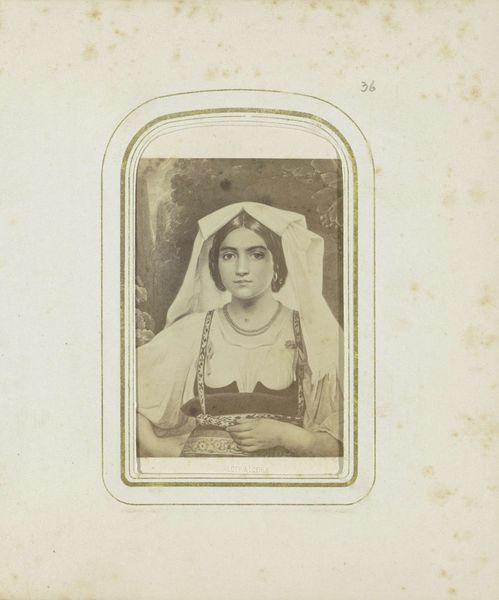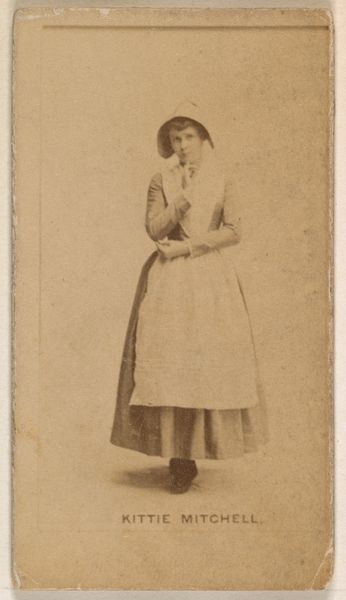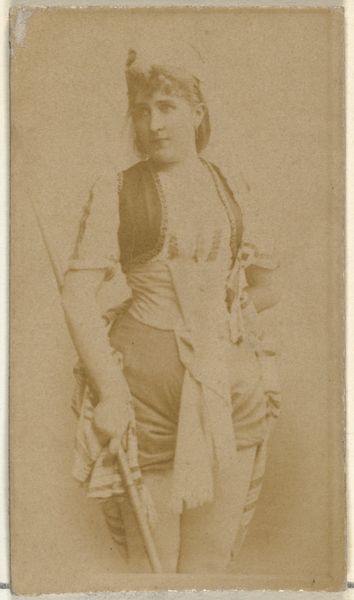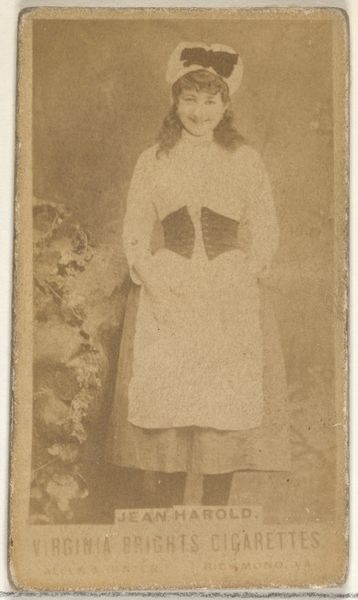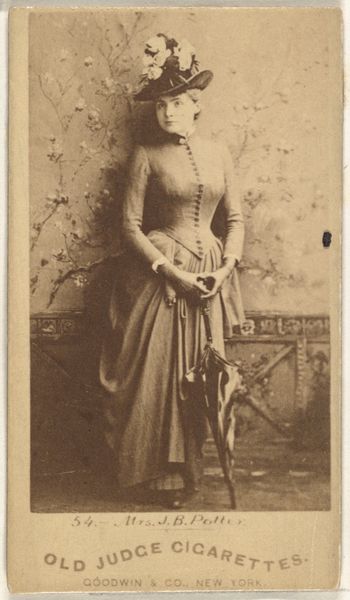
Copyright: Public Domain
Curator: Pierre-Louis Pierson captured "La Nonne blanche" sometime in the 1860s, and the work is now held at the Metropolitan Museum of Art. It's a daguerreotype, a very early photographic process. Editor: Its ghostly aura is what strikes me first—the muted tones, the figure emerging almost ethereally. The subject’s somber expression definitely amplifies that sense of spectral solitude. Curator: That spectral quality isn't accidental, I suspect. Pierson often collaborated with the Countess de Castiglione, a notorious figure at the time, and his photos of her often play with constructed identities, and challenge normative expectations for women. Editor: The subject's attire certainly directs the gaze. That enveloping white fabric against the plain backdrop creates this fascinating tension. Her dress is starkly simple and contrasted. This is, by design, about the relationship between light, texture, and form. Curator: Precisely. I read that garb as part of her persona, as part of the Countess' self-fashioned identity, one that plays on—perhaps even satirizes—the conventions of feminine virtue expected of women in that era. Pierson was often employed to create an image, and this work exists somewhere between portrait and character study. Editor: Still, the lack of background details forces us inward, towards the woman's face. Her eyes have this startling clarity, and really anchor the composition. If you shift that single feature everything feels destabilized. It has a powerful sense of intimacy. Curator: Intimacy and performance. Think about the performative aspect of identity, and particularly female identity, during the 19th century, think about all those contradictions. The photograph encapsulates those societal pressures of how women must occupy private and public spaces. It really shows a unique, artistic view of gender. Editor: I see your point entirely, how Pierson and the Countess perhaps pushed boundaries and expectations. Regardless, focusing solely on form, and stripping it bare to a simple portrait, has illuminated just how carefully constructed the elements are to make us feel something about the sitter. Curator: Well said. The artwork provides rich entry points for diverse perspectives, so I will consider yours. Editor: As I will consider yours.
Comments
No comments
Be the first to comment and join the conversation on the ultimate creative platform.
